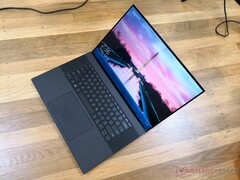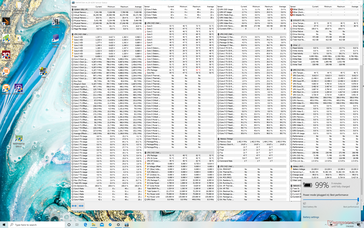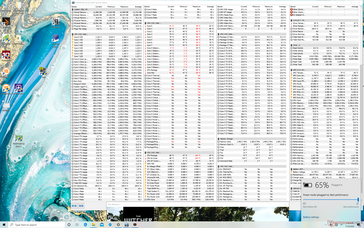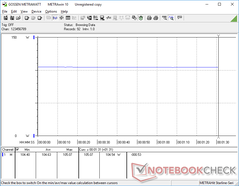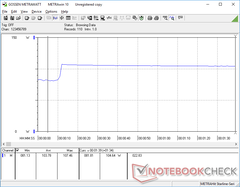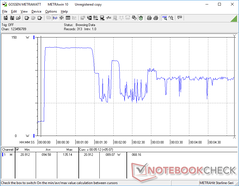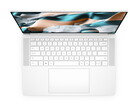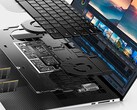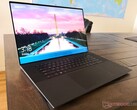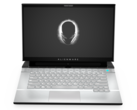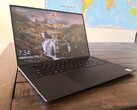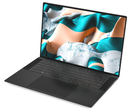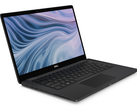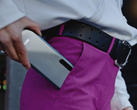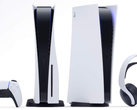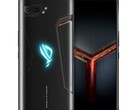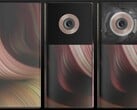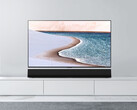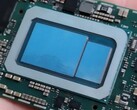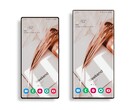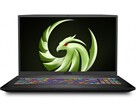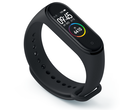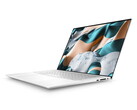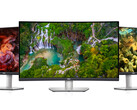(Mise à jour du 10 juillet 2020 à 10h59 : Dell a répondu à notre enquête en disant que le XPS 17 "peut tirer plus de 130 W" grâce au processeur Core i7 et au GPU RTX 2060 Max-Q embarqués, même si son alimentation est évaluée à 130 W.
"De par sa conception, nous permettons au système d'exploiter la batterie pour obtenir plus de puissance lorsque cela se produit", confirme le représentant de Dell. "Donc oui, quand c'est nécessaire, le système peut puiser dans la batterie, puis la recharger plus tard."
L'alternative, selon Dell, aurait été d'expédier le XPS 17 avec un adaptateur secteur plus grand et plus encombrant, ce qui aurait rendu le système moins convivial pour les voyages.
Nous avons mis à jour notre article original ci-dessous pour refléter les nouvelles informations car ce comportement de décharge de la batterie n'est pas un bug mais un choix de conception intentionnel. Le taux de décharge constant lors de l'exécution de charges de traitement élevées est un compromis malheureux pour le CPU et le GPU haute puissance concernés).
(Mise à jour du 10 juillet 2020 à 14h00 : Dell nous a précisé qu'ils allaient étudier l'alimentation de l'adaptateur CA de 130 W. L'adaptateur devrait être capable de fournir 130 W de puissance à l'ordinateur portable au lieu des ~105 W maximum que nous enregistrons. Ainsi, si la lenteur de la décharge de la batterie peut être normale lors de l'utilisation de charges exigeantes, elle peut être plus rapide que ce que Dell avait initialement prévu. Nous continuerons à mettre à jour cette page en fonction des besoins).
Nous sommes à fond dans notre examen du fameux XPS 17 9700 équipé du processeur octa-core Core i7-10875H, du GPU GeForce RTX 2060 Max-Q et de l'écran tactile 4K 16:10 et pourtant nous avons déjà découvert un bug majeur. Dans ce cas, l'ordinateur portable de 17,3 pouces semble présenter des inconvénients en matière de recharge de la batterie lorsqu'il est soumis à des charges de traitement élevées, comme pour les jeux. Nous sommes en mesure de reproduire cela de manière fiable grâce à une unité fournie par Dell.
Quel est le phénomène ?
L'exécution de toute charge de traitement nécessitant plus de 100 W entraîne une lente décharge de la batterie au fil du temps, alors qu'elle devrait plutôt être rechargée. Le problème n'est pas unique au XPS 17 car certains anciens modèles Razer Blade Stealth et Microsoft Surface Book présenteraient des problèmes de charge similaires. Tous ces systèmes peuvent se recharger via USB-C.
Les XPS 17 bas de gamme sans le GPU discret Nvidia RTX ne souffrent peut-être pas de ce problème, comme nous l'avons observé sur les anciens modèles Razer Blade Stealth avec et sans le GPU discret Nvidia MX150.
How We Reproduced The Battery Drain
We first started on a full battery charge of 100 percent and a battery capacity of 91 Wh as reported by HWiNFO. Then, we would run Witcher 3 at 1080p High settings while observing for any changes to the battery. Sure enough, battery percentage and remaining capacity would drop to 65 percent and 60.5 Wh, respectively, after two hours of gameplay. The steady decline in battery capacity can be observed and recorded by the second.
When we closed the game, the recharge rate would jump back to normal.
Top 10
» Le Top 10 des PC portables multimédia
» Le Top 10 des PC portables de jeu
» Le Top 10 des PC portables de jeu légers
» Le Top 10 des ordinateurs portables bureautiques
» Le Top 10 des PC portables bureautiques premium/professionnels
» Le Top 10 des Stations de travail mobiles
» Le Top 10 des Ultraportables
» Le Top 10 des Ultrabooks
» Le Top 10 des Convertibles
» Le Top 10 des Tablettes
» Le Top 10 des Tablettes Windows
» Le Top 10 des Smartphones
» Le Top 10 des PC Portables á moins de 300 euros
» Le Top 10 des PC Portables á moins de 500 euros
» Le Top 25 des meilleurs écrans d'ordinateurs
Why Is This Happening?
The official specification for power-over-Thunderbolt 3 is up to 100 W, but Dell’s unique implementation for the XPS 15 and XPS 17 series is set to 130 W instead since these are high-power laptops running on demanding Core H-series CPUs and GeForce GTX/RTX graphics. What we’re seeing is that the total system power when running Witcher 3 is around 135 W, but our Gossen multimeter reveals that the system can only pull a maximum of 105 W from the AC adapter as shown by our graphs below. It’s safe to assume that this difference is responsible for the slow battery drain when running the game.
Are Other XPS 17 Users Experiencing The Same Phenomenon?
A quick look at the Dell Reddit page shows several posts with similar charging problems as what we’ve described here. We certainly can’t confirm each source, but we can’t deny them either based on our own experience here.
(July 10, 2020 update: The Precision 5750 series, which is based on the same XPS 17 chassis, will also exhibit the same battery drain disadvantage when under demanding loads. This will probably be a greater annoyance to Precision users who are more likely to run high loads for longer periods than XPS 17 owners.)
Can This Be Fixed?
Dell has confirmed that the battery discharge behavior is intentional and no "fix" is planned, but there will be an investigation on the 130 W AC adapter. The bright side is that this likely won't impact most XPS 17 owners since you would have to be running extreme loads for about 6 hours straight to fully discharge the battery — an unlikely scenario. From a consumer's perspective, however, plugging in your laptop comes with the expectation that the battery will not drain. To have the opposite be true will indubitably confuse the user base as exemplified here.
It's worth mentioning that Razer faced a similar issue with its 2018 Blade Stealth series before ultimately addressing it for the 2019 refresh. After all, it's hard to argue with the phrase "If I plug in my laptop, I expect it to recharge".
It’s important to note that the XPS 15 9500 uses the same 130 W AC adapter as the XPS 17 9700 and we experienced no such charging issues on the 15.6-inch model. In fact, we were able to observe power consumption rates of up to 135 W on the XPS 15 whereas the XPS 17 is "capped" at 105 W.




